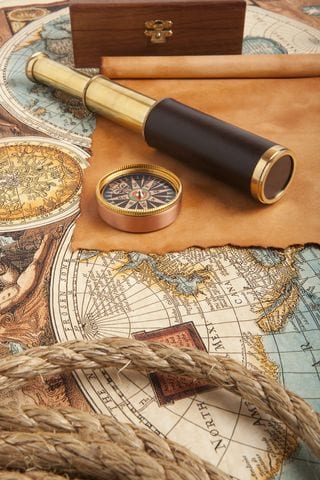 When it comes to distributing your assets, investment accounts are easily divided. However, tangible assets, especially those with sentimental value, can become emotional lightning rods for families.
When it comes to distributing your assets, investment accounts are easily divided. However, tangible assets, especially those with sentimental value, can become emotional lightning rods for families.
Boomers are today confronting their own mortality, and that includes preparing to transfer their wealth to children and grandchildren. According to an article in Kiplinger, “Estate Planning Answers for 'Hard' Assets Like Art, Heirlooms,” this will be one of the largest transfers of wealth in U.S. history.
It’s pretty straightforward to pass along liquid assets like stocks, bonds and cash. However, “hard” assets like property, art and jewelry can present some problems. The reason for this is that families don’t maintain a good inventory of these assets, the value of the assets may be outdated or unknown, and family members may have different ideas of how to handle them. Many individuals are also reticent to discuss the issue with their heirs.
Because of this, hard assets can be totally overlooked, despite discussions about their potential value. Similar to liquid assets, illiquid assets must have a formal plan that starts with a dialog between the family decision-makers, estate planning attorneys and perhaps an appraiser. To get the illiquid assets distribution discussion going, consider these three key questions:
What’s it worth? Begin with its fair market value, which is the first step for any plan. That’s because it attaches an actual, current dollar figure to an item that has probably changed in value over time.
When getting an appraisal for an asset, look for an experienced, certified appraiser—especially for artwork. The reason is that there’s a big financial risk of mispricing your assets. Don’t rely on online art price guides, advice from your brother who used to be a painter, or even the original seller (who may have a conflict of interest). The appraiser should be certified by one of the main accrediting bodies, like The Appraisers Association of America or the International Society of Appraisers. For a large collection, the cost of the appraisal is well worth it, so you will know its true value and how that value will impact your estate.
Which heir(s) want it? Along with the actual monetary value, consider the emotional or sentimental value of your hard assets. Your children may have strong attachments to specific assets. This should be taken into account.
If several heirs want the same asset, look at whether and how it can be divided. If it can’t be divided equally, think about how you can equitably divide other assets. If some, but not all, of your heirs want to keep the asset, look into an equitable buyout situation that transfers ownership to the heirs who’d like to keep it.
How do I pass it on? There are several ways to pass on illiquid assets. Typically, it’s best to let an heir inherit the asset itself. Illiquid assets get a step-up in cost basis that reduces or eliminates the capital gains tax, even if the heirs decide to sell it. You can also place the asset in a trust, family partnership, or LLC and formalize the transfer of ownership in a tax-efficient way, at the same time saving on future estate taxes. Finally, if you don’t think your heirs understand the asset enough to sell it for a fair price, you can sell it yourself, pay the appropriate taxes and give them the cash.
Having this conversation may be as difficult as the one about your estate plan and wishes for your funeral. However, it is just as necessary. Consider it an opportunity to teach your children, even if they are adults.
Reference: Kiplinger (November 5, 2018) “Estate Planning Answers for 'Hard' Assets Like Art, Heirlooms”
